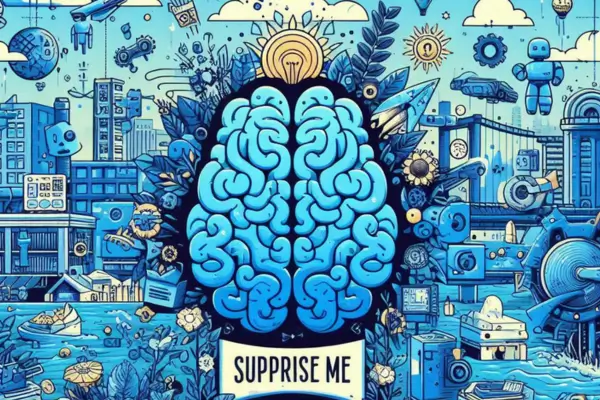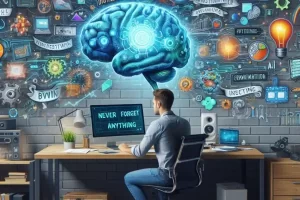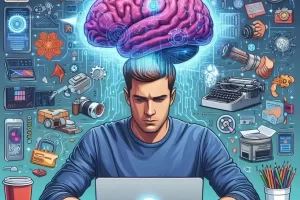Self-awareness is the foundation of personal growth. It helps you understand your thoughts, emotions, behaviors, and patterns — so you can make better decisions, navigate relationships, and live more intentionally. But true self-awareness takes consistent reflection, and that’s where your second brain, powered by artificial intelligence (AI), becomes a transformative tool.
In this article, you’ll learn how to use your second brain to track your inner world, process your emotions, and use AI to identify patterns, improve emotional clarity, and deepen your understanding of yourself.
Why Self-Awareness Is a Superpower
Without self-awareness, you may:
- Repeat emotional patterns unconsciously
- React instead of respond
- Struggle with communication
- Lose touch with your needs and values
- Experience internal confusion and frustration
But with a self-awareness system, you can:
- Understand your emotions and triggers
- Identify recurring thought patterns
- Align your actions with your values
- Improve your relationships
- Make better decisions with emotional intelligence
Your second brain becomes your mirror, and AI becomes your reflective partner.
Create a Self-Awareness Journal in Your Second Brain
Start with a dedicated space to capture thoughts, feelings, and reflections.
Include in your daily/weekly note:
- How am I feeling right now?
- What triggered this emotion?
- What do I need today?
- What thought patterns showed up?
- What gave me energy? What drained it?
Let AI help:
“Summarize my last 3 journal entries and highlight emotional themes.”
“What emotions appear most frequently in my reflections?”
“Suggest journaling prompts to help me understand this feeling of anxiety.”
Now your second brain captures your emotional history — in your own words.
Use Tags and Themes to Organize Emotional Insights
Start tagging your journal entries with emotional or mindset-based labels, such as:
- #stress
- #gratitude
- #self-doubt
- #motivation
- #burnout
- #confidence
- #growth
You can also group entries by:
- Life area (work, health, relationships, identity)
- Energy level (low, medium, high)
- Mental state (calm, overwhelmed, focused)
Ask AI:
“Organize my journal by emotional theme.”
“What’s the most common mindset I reflect on?”
“When do I typically feel burned out, based on past entries?”
This helps you see emotional patterns across time.
Build an Emotional Check-In Ritual
Make emotional awareness a habit with a simple check-in template:
- 🌡️ Current emotion (1–10 scale or description)
- 🧠 What am I thinking?
- ❤️ What am I feeling in my body?
- 🔍 Where is this coming from?
- 🎯 What do I want to do with this awareness?
Let AI assist:
“Guide me through a 5-minute emotional check-in.”
“Summarize this reflection and suggest what I need today.”
“How can I respond to this emotion in a healthy way?”
This gives you pause, space, and presence — even on busy days.
Use AI to Reflect on Patterns and Triggers
Emotions are signals. AI can help you understand what they’re pointing to.
Prompts:
“What recurring triggers do I journal about in relation to work?”
“Which people or events create positive or negative emotional patterns?”
“How does my mood correlate with my energy or habits?”
“When do I most often feel aligned, and when do I feel disconnected?”
This turns emotional journaling into emotional intelligence.
Align Emotions With Goals and Values
Self-awareness deepens when you connect your emotions to your values and purpose.
Ask AI:
“Does this pattern of frustration suggest a misalignment with my values?”
“What personal value might I be neglecting this week?”
“Based on recent entries, what motivates me most consistently?”
“What makes me feel most in control and grounded?”
Use your second brain to map emotional states to:
- Goals
- Environments
- People
- Projects
- Habits
This helps you live in emotional alignment — not constant reaction.
Track Emotional Growth Over Time
Use your second brain as a log of your evolving inner life. Over weeks and months, you’ll be able to see:
- Emotional resilience improving
- Decreasing reactivity
- Growth in self-compassion
- Improved clarity during difficult moments
Ask AI:
“Compare my journal from 3 months ago to this week. What emotional shifts do you see?”
“Have my confidence and self-trust increased or decreased over time?”
“What mental habits have I replaced or reinforced recently?”
You’ll begin to witness your inner transformation — clearly.
Use Self-Awareness to Improve Decision-Making and Relationships
Emotional clarity leads to better:
- Boundaries
- Communication
- Leadership
- Prioritization
- Decision-making
Let AI assist in applying emotional insight:
“How might my current mindset affect this decision?”
“Am I avoiding this conversation because of fear or facts?”
“What does my emotional data suggest about the right next step?”
You’re no longer just reacting — you’re responding with wisdom.
Real-Life Example: The Conscious Creator
You’re an entrepreneur balancing creativity, clients, and personal growth.
With your second brain + AI:
- You journal briefly each day using guided prompts
- AI helps you tag emotional patterns and track energy levels
- Weekly summaries reveal what fuels or drains you
- You notice repeated emotional triggers — and build new coping tools
- You make decisions with greater clarity and calm
You’re not just building a business — you’re building emotional mastery.
Final Thoughts: Know Yourself, Grow Yourself
Self-awareness doesn’t come from overthinking — it comes from noticing.
Your second brain and AI give you:
- A private space for reflection
- A structure for emotional clarity
- A guide to reveal what you can’t always see
- A record of how you’re growing — inside and out
When you understand yourself, you lead yourself. And when you lead yourself, everything else follows.
Let your second brain be your space for truth. Let AI help you discover and honor who you really are.




